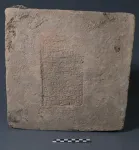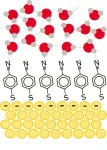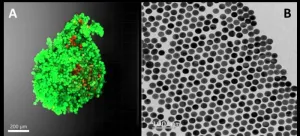(Press-News.org) Public opinion polls are often considered "the will of the people" but a new study on the role of polls in South Korea shows that they may not always be that transparent.
"Using polls to gauge what people think about politics is not as simple as it sounds, as there are multiple mediating factors between what people think and how their views may be represented in the media," says co-author Sunmin Kim, an assistant professor of sociology at Dartmouth. "Our research shows more broadly, how in a democracy, measuring what people think or want can be a highly haphazard and unpredictable process based on the ways public opinion poll data are collected and reported."
The findings are published in Politics & Society.
To examine the relationship between public opinion and polling, the research team chose to focus on South Korea because in the span of one generation, the country transitioned between the 1950s to the late 1980s from an authoritarian regime to a democratic society where polling has become an integral part of the political fabric.
In addition to forecasting elections, polls are sometimes used to select the candidates for national primary elections. For example, during the 2002 presidential campaign, following a televised debate between two opposition candidates, Roh Moo-hyun of the Millennium Democratic Party and Chung Mong-joon, who ran as an independent, formed a coalition, with Roh as the candidate on the basis of winning a poll. He wound up defeating another candidate and winning the presidency.
In spring 2014, Kim and co-author Taeku Lee, the Bae Family Professor of Government at Harvard University, traveled twice to South Korea to interview 23 pollsters, journalists, academics, and campaign experts. They asked about the public perception of polls, the quality of the data, media coverage of poll results, and the relationship between polls and democracy in the country.
"There's a contradiction between the ideal of polling and its practice," says Kim. "The reality is that there's all kinds of noise, including bad behavior, and opportunism that comes into play."
Through this qualitative study in South Korea, the results demonstrate how the process of polling has its weaknesses, which pertain to technology, methodology, intentions, and reporting of data.
First, technology may affect a polling sample. Although South Korea boasts a 95% to 98% cell phone coverage rate, the interviewees caution that conducting polls by cell phone may result in overrepresenting young people.
Second, the way a poll is administered and whether it is automated or conducted in person can affect the response rate. Respondents may be more inclined to express their opinions depending on which poll method is used.
In South Korea, some political candidates hire polling firms to conduct polls but in reality, they are hired to help with campaign messaging through the poll questions, such as by asking negative questions about a rival.
To obtain desirable data, pollsters may also distort the sample. If for example, a candidate is less popular among women, pollsters may systematically exclude women from the sample to get the numbers that they want.
The researchers also call attention to the role of "hit and run" operations in local elections by pollsters. A polling firm will set up operations in a county and obtain the results that a politician wants, and once they get paid for the work, they disappear, so that there's no accountability. The pollsters may, however, show up in another county working under another guise.
One of the other challenges with polls during an election season is the way that the results are reported by the media. According to the co-authors, the media often uses "horse-race polling" by focusing on who's the frontrunner versus the underdog, which may help the leading candidate gain further momentum.
Consider a race that is especially close between two candidates: the stronger candidate is ahead by 5 percentage points and the margin of error is 4.5 points. The two candidates are effectively tied, statistically speaking, but the media will focus instead on who is ahead and exclude the context.
"In the social sciences, public opinion polling has been widely accepted as a type of democratic process, but our study demonstrates how polls represent a social construction of public opinion, much of which is influenced by pollsters and their processes, and the media," says Kim.
Sunmin Kim is available for comment at: sunmin.kim@dartmouth.edu.
###
END
Public opinion polls may not be as straightforward as you think
Study reports on the role, and limitations, of polling in South Korea's democracy and how it has its limits.
2023-12-18
ELSE PRESS RELEASES FROM THIS DATE:
Study assesses GPT-4’s potential to perpetuate racial, gender biases in clinical decision making
2023-12-18
A team of Brigham researchers analyzed GPT-4’s performance in four clinical decision support scenarios: generating clinical vignettes, diagnostic reasoning, clinical plan generation and subjective patient assessments.
When prompted to generate clinical vignettes for medical education, GPT-4 failed to model the demographic diversity of medical conditions, exaggerating known demographic prevalence differences in 89% of diseases.
When evaluating patient perception, GPT-4 produced significantly different responses by gender or race/ethnicity for 23% of cases.
Large language models (LLMs) like ChatGPT and GPT-4 have the potential to assist in ...
Apes remember friends they haven’t seen for decades
2023-12-18
Apes recognize photos of groupmates they haven’t seen for more than 25 years and respond even more enthusiastically to pictures of their friends, a new study finds.
The work, which demonstrates the longest-lasting social memory ever documented outside of humans, and underscores how human culture evolved from the common ancestors we share with apes, our closest relatives, was published today in the journal Proceedings of the National Academy of Sciences.
“Chimpanzees and bonobos recognize individuals even though they haven’t seen them for ...
Scientists might be using a flawed strategy to predict how species will fare under climate change
2023-12-18
EMBARGO LIFTS DEC. 18, 2023, AT 3:00 PM U.S. EASTERN TIME
As the world heats up, and the climate shifts, life will migrate, adapt or go extinct. For decades, scientists have deployed a specific method to predict how a species will fare during this time of great change. But according to new research, that method might be producing results that are misleading or wrong.
University of Arizona researchers and their team members at the U.S. Forest Service and Brown University found that the method – commonly referred to as space-for-time substitution – failed to accurately predict how a widespread tree of the Western U.S. called the ...
Mesopotamian bricks unveil the strength of Earth’s ancient magnetic field
2023-12-18
Ancient bricks inscribed with the names of Mesopotamian kings have yielded important insights into a mysterious anomaly in Earth’s magnetic field 3,000 years ago, according to a new study involving UCL researchers.
The research, published in the Proceedings of the National Academy of Sciences (PNAS), describes how changes in the Earth’s magnetic field imprinted on iron oxide grains within ancient clay bricks, and how scientists were able to reconstruct these changes from the names of the kings inscribed on the bricks.
The team hopes that using this “archaeomagnetism,” which looks for signatures ...
Move over dolphins. Chimps and bonobos can recognize long-lost friends and family — for decades
2023-12-18
Researchers led by a University of California, Berkeley, comparative psychologist have found that great apes and chimpanzees, our closest living relatives, can recognize groupmates they haven't seen in over two decades — evidence of what’s believed to be the longest-lasting nonhuman memory ever recorded.
The findings also bolster the theory that long-term memory in humans, chimpanzees and bonobos likely comes from our shared common ancestor that lived between 6 million and 9 million years ago.
The team used infrared eye-tracking cameras to record where bonobos and chimps gazed when they were shown side-by-side images of other bonobos ...
First observation of how water molecules move near a metal electrode
2023-12-18
A collaborative team of experimental and computational physical chemists from South Korea and the United States have made an important discovery in the field of electrochemistry, shedding light on the movement of water molecules near metal electrodes. This research holds profound implications for the advancement of next-generation batteries utilizing aqueous electrolytes.
In the nanoscale realm, chemists typically utilize laser light to illuminate molecules and measure spectroscopic properties to visualize molecules. However, studying the behavior of ...
Harnessing nanotechnology to understand tumor behavior
2023-12-18
A study conducted by pre-PhD researcher Pablo S. Valera and recently published in PNAS demonstrates the potential of surface-enhanced Raman spectroscopy (SERS) to explore metabolites secreted by cancer cells in cancer research. The study, which has been led by Ikerbasque Research Professors Luis Liz-Marzán (from CIC biomaGUNE) and Arkaitz Carracedo (of CIC bioGUNE) and in which other researchers from both centers, also members of the Networking Biomedical Research Centre (CIBER), have participated as well, provides valuable information to guide more specific experiments to reveal ...
Exercise-induced Pgc-1α expression inhibits fat accumulation in aged skeletal muscles
2023-12-18
Myosteatosis, or aging-related fat accumulation in skeletal muscles, is a leading cause of declines in muscle strength and quality of life in elderly adults.
Older adults who are sedentary and develop accumulated fat in the skeletal muscle are often prescribed exercise by their doctors to combat the condition. If scientists were to develop a new therapy, such as medications, to combat myosteatosis, they would need to replicate the mechanism by which exercise might reduce fat accumulation in muscles.
Fibro-adipogenic ...
NASA’s Webb rings in holidays with ringed planet Uranus
2023-12-18
NASA’s James Webb Space Telescope recently trained its sights on unusual and enigmatic Uranus, an ice giant that spins on its side. Webb captured this dynamic world with rings, moons, storms, and other atmospheric features – including a seasonal polar cap. The image expands upon a two-color version released earlier this year, adding additional wavelength coverage for a more detailed look.
With its exquisite sensitivity, Webb captured Uranus’ dim inner and outer rings, including the ...
Memory research: Breathing in sleep impacts memory processes
2023-12-18
How are memories consolidated during sleep? In 2021, researchers led by Dr. Thomas Schreiner, leader of the Emmy Noether junior research group at LMU’s Department of Psychology, had already shown there was a direct relationship between the emergence of certain sleep-related brain activity patterns and the reactivation of memory contents during sleep. However, it was still unclear whether these rhythms are orchestrated by a central pacemaker. So the researchers joined up with scientists from the Max Planck Institute for Human Development in Berlin and the University of Oxford to reanalyze the data. Their results have identified ...
LAST 30 PRESS RELEASES:
Clearing the brain of aging cells could aid epilepsy and reduce seizures
Brain injuries linked with potential risk of suicide, new study finds
New technique lights up where drugs go in the body, cell by cell
New study finds movement of fishing fleets can reveal shifts in marine ecosystems
Embargoed: New evidence points to potential treatment for vascular dementia
Study uncovers disrupted brain balance in alcohol dependence
Working in groups can help Republicans and Democrats agree on controversial content moderation online
Structural findings reveal how distinct GPCR ligands create different levels of activation
Anything-goes “anyons” may be at the root of surprising quantum experiments
UC review: Maximizing workplace opportunity for veterans
From generation to complex control: Metasurfaces make perfect vortex beams "within reach"
Thin-film lithium niobate-based detector: recent advances and perspectives
Exploring why some people may tend to persistently make bad choices
How cells balance their protein levels
Nirsevimab vs RSVpreF vaccine for RSV–related hospitalization in newborns
Effectiveness and impact of maternal RSV immunization and nirsevimab on medically attended RSV in US children
AI gives scientists a boost, but at the cost of too many mediocre papers
Next-generation vision model maps tree growth at sub-meter precision
Genes aren’t destiny for inherited blindness, study shows
MIT study: High-fat diets make liver cells more likely to become cancerous
Exposure to multiple fine particulate matter components and incident depression in the US Medicare population
Risk of burdensome health care spending over time in the US
Nirsevimab against hospitalizations and emergency department visits for lower respiratory tract infection in infants
New microfluidics technology enables highly uniform DNA condensate formation
A new strategy for immune tolerance
Super Mario Bros. help fight burnout: New study links classic games to boosted happiness
Deepest gas hydrate cold seep ever discovered in the arctic: International research team unveils Freya Hydrate Mounds at 3,640 m depth.
Integrating light and structure: Smarter mapping for fragile wetland ecosystems
ACA-SIM: A robust way to decode satellite signals over complex waters
Probiotics can restore gut microbiome in breastfed infants
[Press-News.org] Public opinion polls may not be as straightforward as you thinkStudy reports on the role, and limitations, of polling in South Korea's democracy and how it has its limits.





